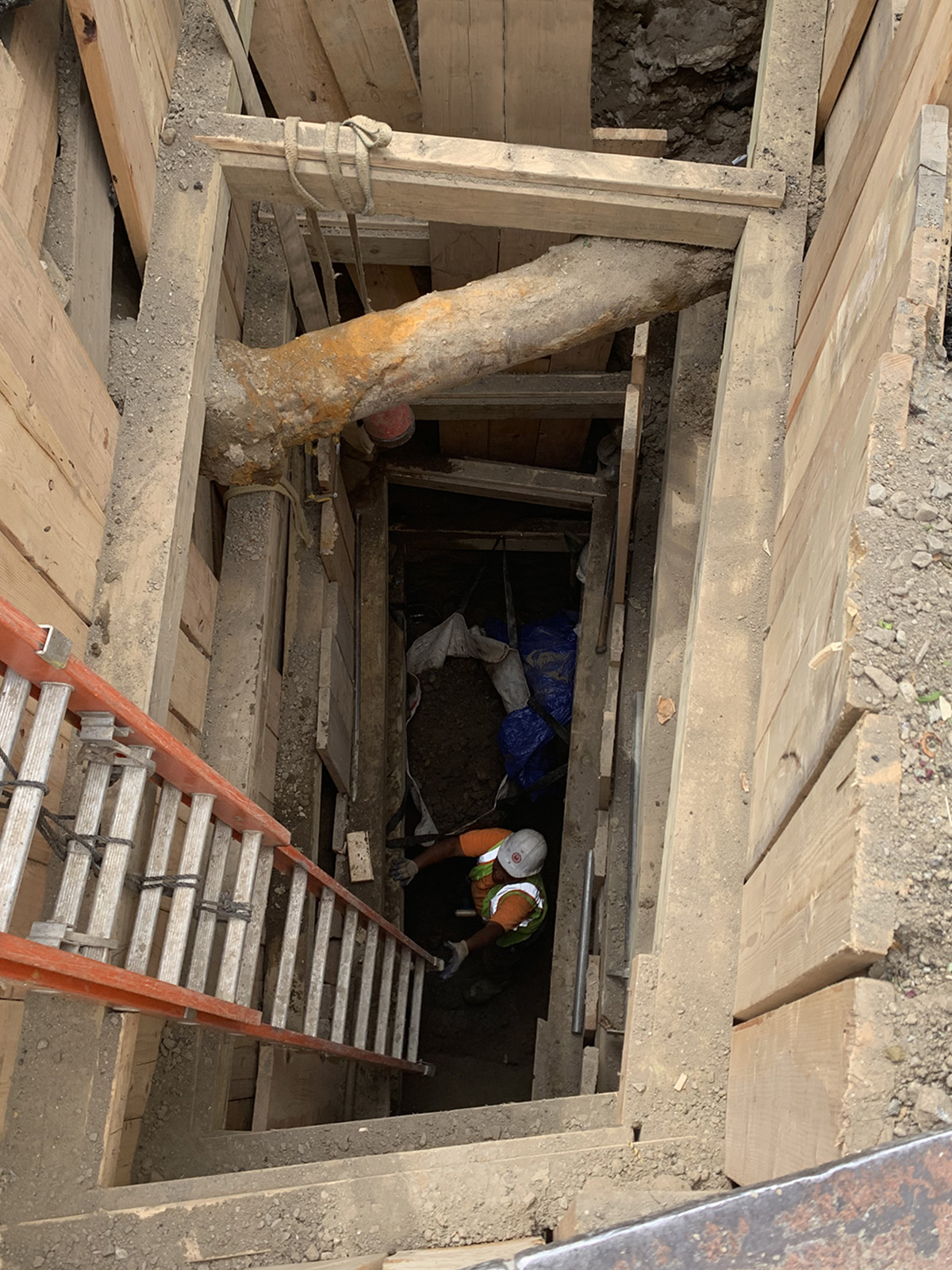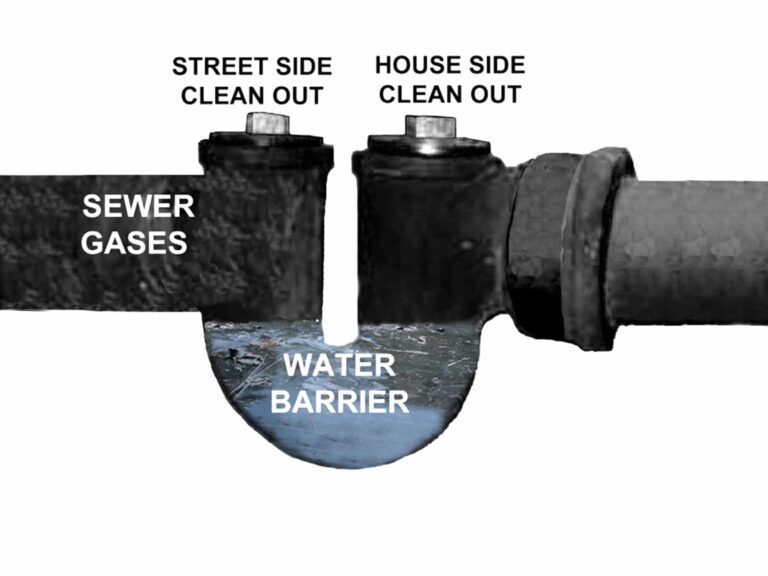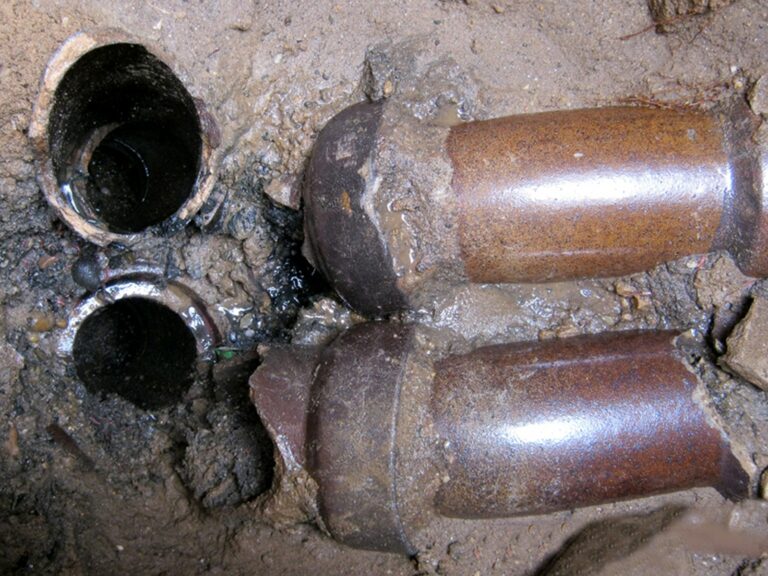One of your worst nightmares as a homeowner is discovering that your sewer line is broken, and you need to replace a sewer line from house to street. The main house sewer line for your property serves as the primary connection between your home and the city’s main sewer line. Sewer lines connect your home to the city’s main sewer – allowing the transport of liquid and solid waste away from the home.
Unfortunately, these lines can become damaged over time. This can be due to sewer issues such as settlement of the pipe, or tree roots infiltrating the line. This is where the importance of being knowledgeable about sewer line replacement comes in.
A sewer line replacement is also one of the more expensive jobs a homeowner can incur, and time consuming as well. If this nightmare becomes your reality, you will need to have your sewer line repairedor replaced as quickly as possible. That will likely lead to you asking the question “How long does a sewer line replacement take“? This article will hone in on that issue, the time needed to replace a sewer line.
How Long Does It Take To Replace A Sewer Line
A sewer line replacement can be an extensive process that doesn’t have one universal answer when it comes to how long it will take. Typically, to replace a sewer line it can take anywhere from 1 to 2 days, to 3 to 5 days. In some rare cases, it may even be as quick as one day. Generally, the estimated time frame will depend on the layout of your property, your home’s piping system, and the depth required to excavate.
Traditional pipe replacements may need more time for excavation and labor-intensive activities like digging trenches. In some areas, sewer pipe lines or pipe bursting are permitted. In those areas, the time factor is less to replace a sewer line. When excavation is required to replace a sewer line, there are 3 key determining factors.
3 Factors That Affect The Time To Replace A Sewer Line
There are technically multiple factors that affect a sewer line replacement and how long it takes to perform. However, for simplification, they can be broken down into 3 main factors as follows:
- The Depth of the House Sewer Line and Public Sewer
One of the two major factors that determine how long it takes to replace a sewer is the required depth of the excavations. For instance, a house that is slab on grade, as opposed to having a full basement below grade, can take two full days less to replace the sewer line. In simple terms, excavating less than 5′ deep is dramatically different than excavating 8′ deep or more.
2. The Length of the Run Of Pipe
The second key factor that determines how long a sewer replacement will take is the length of the run of pipe. As an example, a building that is located on the property boundary vs. a building that has a 40′ front yard will have a dramatically different length of run of pipe. This will likewise cause a difference in the time needed to perform a sewer line replacement. In NYC it could be the difference between a 2 or a 3 day job, and a 4 or a 5 day job.
3. Accessibility To Replace A Sewer Line
How easy is it for your sewer contractor to access the sewer line? The easier it is for your contractor to access the area, the quicker they’ll be able to replace it without any issues. Of particular note, is sewer work located in congested metropolitan areas, such as the various boroughs of NYC.
In certain areas, particularly Manhattan, large and cumbersome groupings of underground utility lines are typically present. This is unlike residential areas where utility poles exist to hang telephone, electrical lines, cable TV, and gas lines may not even be present.
However, areas such as Manhattan have many various utility lines, and they’re all installed underground. In some cases, an extreme underground utility presence can mandate hand digging, which is much more time-consuming than using a backhoe or an excavator.
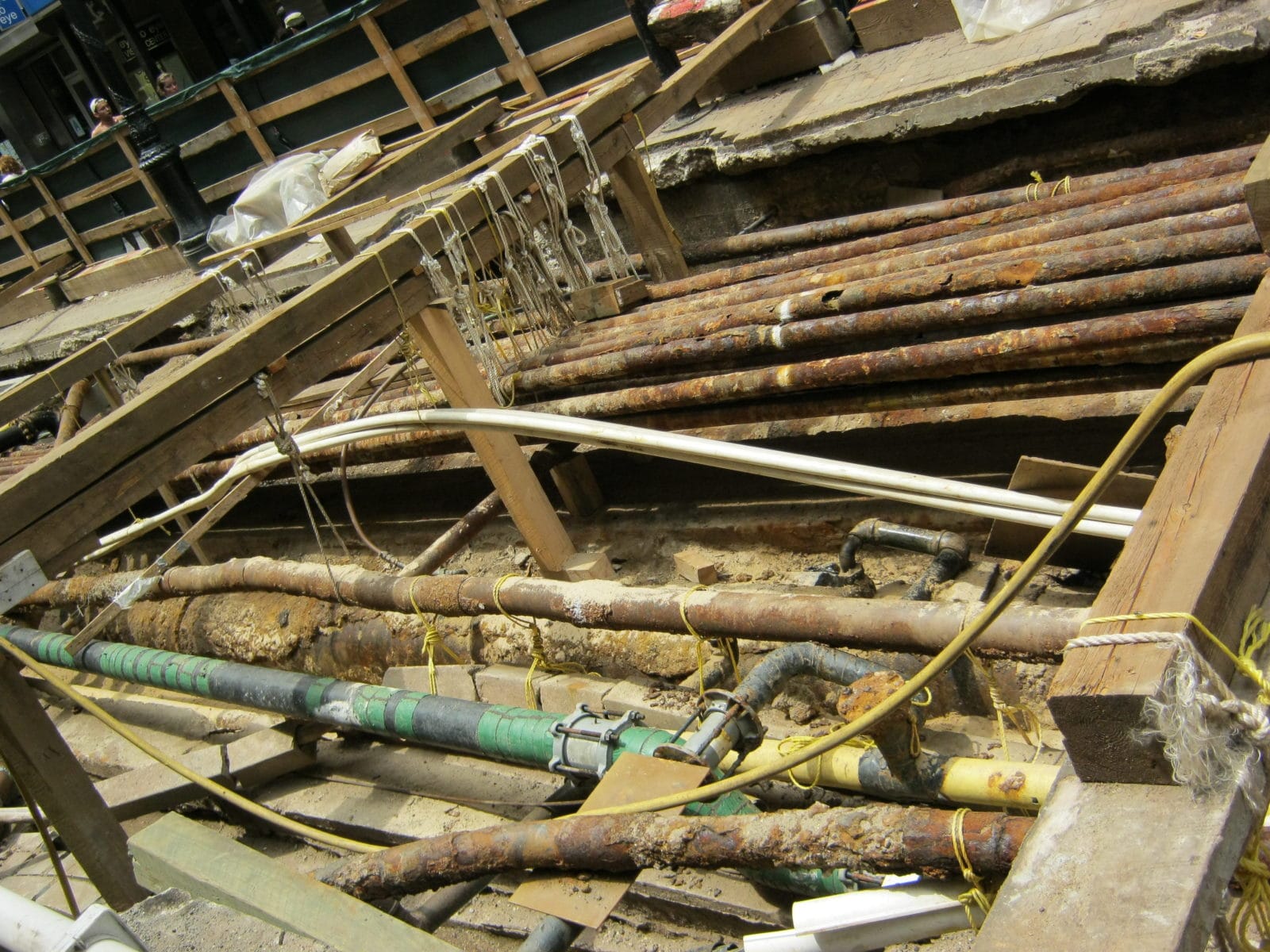
Blockages, Type of Damage, Pipe Material, and Material Availability Can Affect The Time
If you need sewer work, many questions might cross your mind. You might worry about some of the following 5 factors. But rest assured, many of them do not affect the time it takes to perform sewer work.
1.Where the Blockage or Break is Located Is NOT a Major Factor
The placement of the blockage or break is not a major factor when it comes to estimating how long a full sewer line replacement takes. This is more of a factor when doing a sewer spot repair, or partial replacement. For instance, if the clog is located inside your property, then you can expect a sewer re[pari to be completed in as little as one day. On the other hand, a clog or breakage located under a street or sidewalk could take two or three days just to do a sewer repair.
2. The Type of Sewer Line Damage
The kind of damage plays a huge role in the scope of work you choose to do. But the type of damage does not affect the time to do a sewer replacement, since the entire line is being replaced. For instance, the tree root sewer line repair cost is no different than any other cause of a sewer problem. However, knowing the type of issue, such as grease, roots, or a back-pitched pipe, greatly determines whether a full replacement or a repair is preferred. For instance, typically a back-pitched sewer line needs a full sewer replacement to cure the issue.

3. Type of Pipes Needed To Replace A Sewer Line
Of course, you must also take pipe material and age into consideration during a sewer line replacement, since certain materials require extra attention. While not a major factor, the pre-existing pipe materials do affect the degree of difficulty when you need to replace a sewer line.
4. Availability of Materials Can Be A Factor
Does your contractor have all the necessary materials available on their trucks? Will they need to order materials, and fittings from outside sources, or rent equipment? These are reasons to hire a contractor who is a dedicated and experienced sewer contractor. What may be an extraordinary job for one, is commonplace and routine for the other.
5. The Age and The Material of the Existing Sewer Line
Older pipes require additional care while replacing them to keep temporary sewer service intact for the building’s occupants. In the case of sewer lining (which is not legal or to code within NYC) curing times before the sewer can be used can affect sewer service interruption.
Why Should Homeowners Know How Long It Takes to Replace a Sewer Line?
For homeowners, understanding the timeline for sewer line replacement is essential to plan and prepare adequately. It can also help minimize disruptions and inconveniences caused by the process. Knowing how long it takes to replace a sewer line will allow you, as a homeowner, to estimate costs associated with temporary accommodations or alternative arrangements. Having unrealistic expectations about a sewer job can easily lead to a frustrating experience.
Planning Ahead
Knowing roughly how long the sewer line replacement will take to perform allows homeowners to adjust their schedules. This way, their daily routines won’t be impacted too much. For instance, water may be able to be used before the sewer installation crew mobilizes, but not once they commence work.
Disruption The Management During the Process
Sewer line replacement requires excavation work, which may block access points around the property or cause water/sewage service interruptions. Having an idea of how long these issues will last helps you manage your expectations, or provide a secondary access point, such as a back or side door.
Understand The Cost Considerations
Replacing a sewer line is no small expense. Estimating how long it will take gives people an opportunity to map out their budget when it comes to potential costs and the time frame when the funds will have to be available.
Health and Safety Concerns
Damaged or faulty sewer lines present serious health risks, from sewage buildup to hazardous gases, or even mold and sewer bugs. Timelines are key here since they provide homeowners with an idea of when these potential dangers and nuisances will be addressed.
Regulatory Compliance
Local municipalities often have guidelines that address sewer replacements. Knowing about the expected project duration helps ensure all requirements are met correctly without delay. This includes a permitting process that typically involves more than one public agency.
Recognizing the timeline required for a sewer line replacement not only helps with proper planning, but also protects against disruption-related problems, allows homeowners to calculate expenses, gives peace of mind regarding safety issues, and ensures the process will comply with local guidelines.
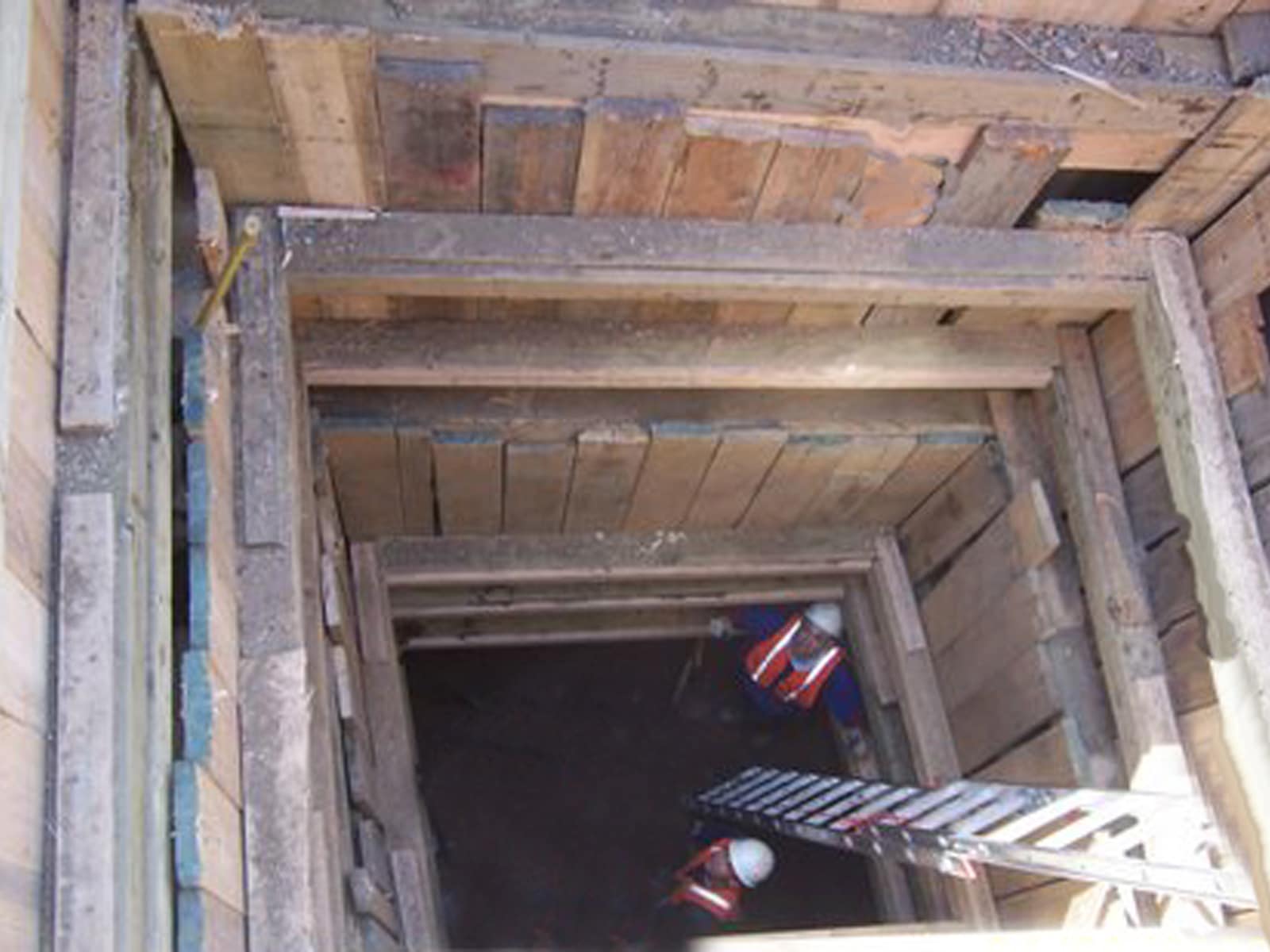
Planning and Flexibility: Estimating Sewer Line Replacement Duration
When you need a sewer line replacement, linking with an experienced sewer contractor is important. Before reaching an agreement, you must establish clear expectations and gather important details regarding the project timeline. Here are some considerations to keep in mind:
The Estimated Start Date
When partnering with a sewer contractor, make sure you ask for an estimated start date for the work within a certain parameter. This allows you to plan and prepare appropriately. However, be aware that unexpected circumstances such as inclement weather or delays in obtaining permits or materials may affect this projected timeline.
The Estimated End Date of the Sewer Work
In addition to knowing when your project will begin, you will certainly want to ask about an expected completion date. The contractor should provide you with a realistic estimate of how long they expect the project to take. A reasonable demand is that you require your sewer contractor to work continuous work days as permitted by the terms of their permits. However, remember that surprises along the way can add time to this initial projection.
Flexibility to Changes In The Length of Time The Job Takes
Sewer line replacements are not small efforts. These projects often come with unanticipated challenges, so converse beforehand about strategies regarding how these potential roadblocks will be managed by both sides. Make sure everyone has backup plans just in case anything out of the ordinary happens during the replacement process.
The 4 Key Considerations When Replacing a Sewer Line
Along with knowing how long a sewer line replacement takes, it is good to know about the expected disruption to your sewer service, and to your property as well. Here are important considerations to keep in mind about sewer work:
- Disruption to Sewer Service
- How long will my sewer service be disrupted during the replacement project?
- Are there any temporary alternatives or accommodations available while the sewer line is being replaced?
- What actions should I take to reduce any negative impacts on my usual activities and routines?
- Will there be any restrictions on how we can use water or any specific instructions that my family will need to follow during the replacement?
2. Impact on Property
- What are the required steps to protect my property during the sewer line replacement?
- Will there be any excavation or digging? If there will be, what can you tell me about where the digging will take place and the extent?
- Are there any actions I should take regarding my landscaping, driveway, etc.?
- How will you handle the repairs of any disturbed or damaged areas during the sewer line replacement process?
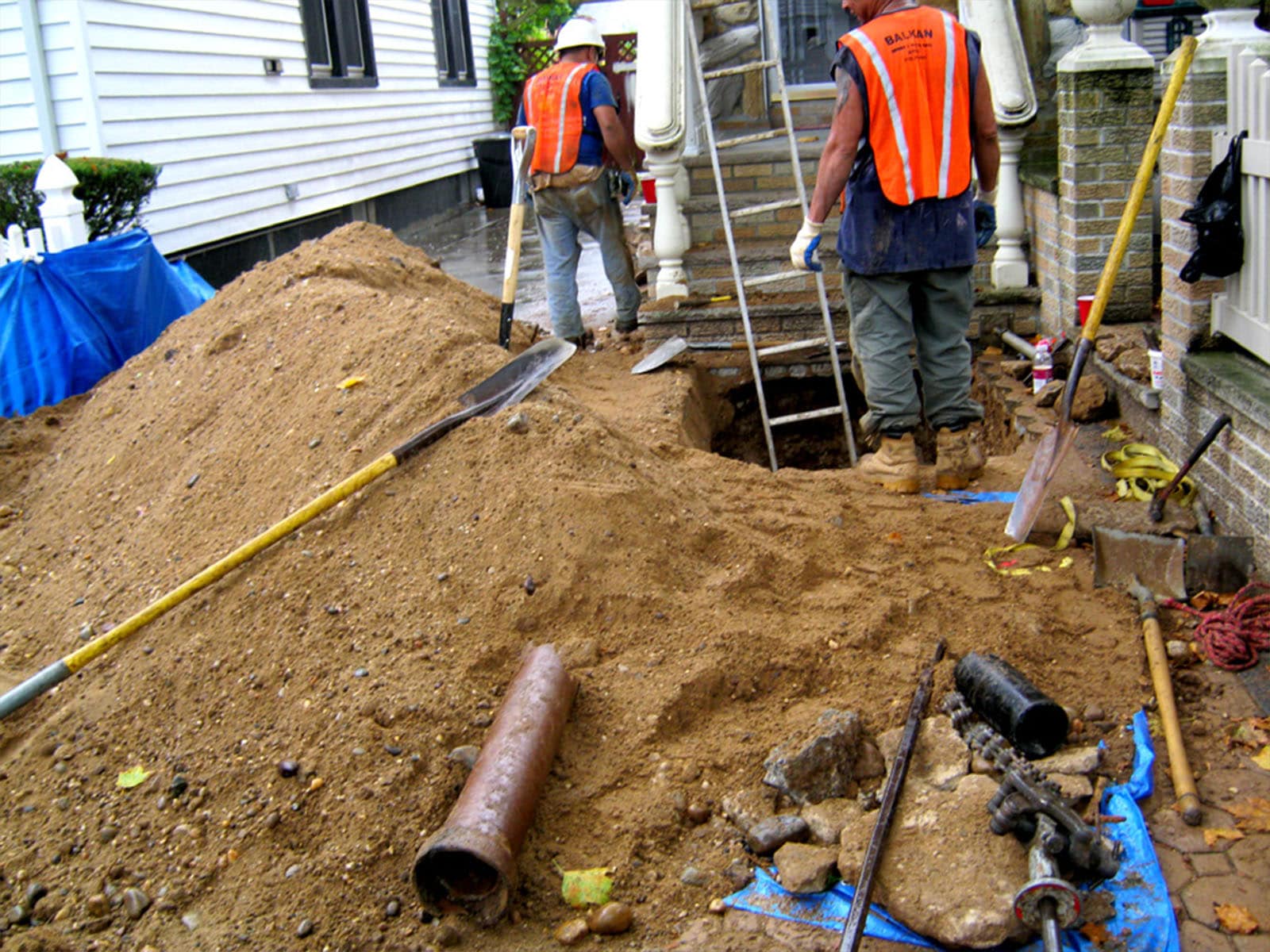
3. Noise, Dust, and Debris
- How much noise, dust, or debris can I expect to hear and see during the sewer line replacement?
- What preparation is required by the property owner?
- Will there be any barriers to limit the spread of dust or debris to other areas of my property?
- How will you make sure that your team properly cleans up the area once you have finished the project?
4. Permits and Regulations
- Do I need any permits for the sewer line replacement? Who takes on the responsibility of making sure those permits are received?
- Do you have experience complying with relevant regulations?
- Will you take care of any necessary inspections and ensure compliance with codes?
When you ask these questions, you will put yourself in a position to have a better understanding of the potential disruption to your sewer service and property, allowing you to plan accordingly and make necessary arrangements during the sewer line replacement process.
Should You Hire a Professional to Replace Your Sewer Line?
When it comes to sewer line replacement, leave it to those who know what they’re doing. Hiring a qualified sewer contractor is the right move if you want the job done correctly and if you want it to comply with local regulations.
A qualified sewer contractor can provide you with a solution that will get your sewer lines working like new again. Plus, the experience they have gained over the years ensures the quick completion of the project so there’s as little disruption to your daily life as possible. Don’t risk DIYing when it comes to this type of job, let professionals handle things for you.
The NYC Expert for Sewer Line Replacement and Repair
If you live anywhere in the NYC metropolitan area and you suspect you need a sewer line replacement, feel free to call Team Balkan for a free, no-obligation on-site assessment, as well as a detailed description of the sewer work.
We take pride in being the largest and most trusted sewer and water main service provider in New York City. With a strong reputation built over decades of service, we have earned the trust of over 90,000 customers throughout the city.

